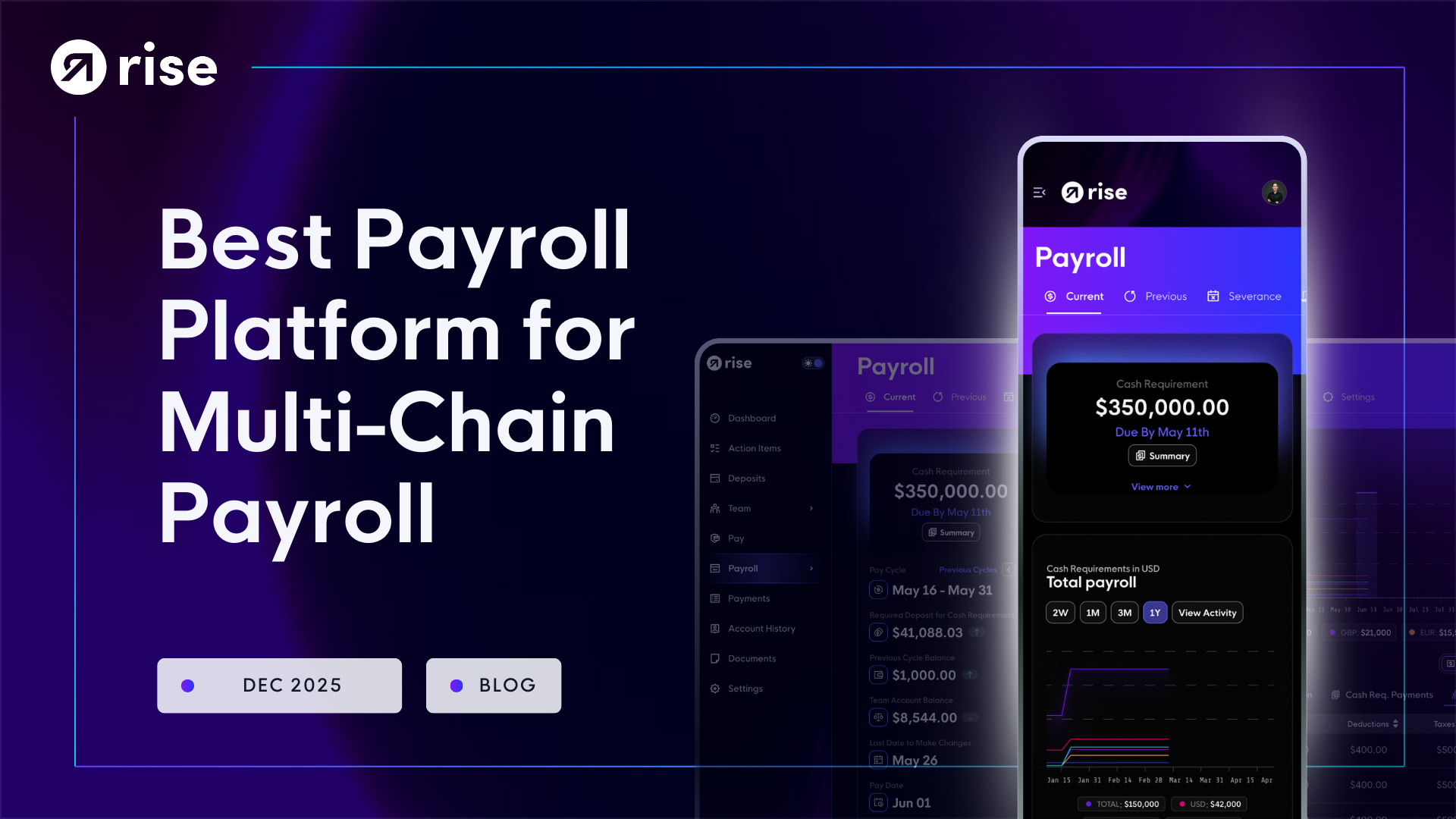

We just launched our new brand. Check it out and see how we are changing the Remote Payment HR world forever.
Employee benefits management
Efficient management of employee benefits ensures that businesses remain competitive in attracting and retaining top talent while complying with legal requirements.
It also includes the administration of benefits, tracking employee eligibility, and managing contributions or deductions.
Key Elements of Employee Benefits Management
- Benefits Program Design: Creating a comprehensive benefits package that aligns with company goals and meets employee needs, covering areas such as health, retirement, and paid leave.
- Compliance and Legal Considerations: Ensuring that benefits programs comply with government regulations, such as the Affordable Care Act (ACA), ERISA, and other local, state, or federal laws.
- Enrollment and Eligibility: Managing employee enrollment in benefit plans, tracking eligibility, and making sure employees understand their options.
- Administration: Handling ongoing administrative tasks, such as processing claims, managing contributions, tracking leave balances, and adjusting employee benefit details when necessary.
- Employee Communication: Effectively communicating the details of benefits programs to employees, including open enrollment, changes to benefits, or deadlines.
- Benefits Tracking and Reporting: Monitoring the cost and usage of benefits programs and generating reports to optimize offerings and ensure sustainability.
Why Is Employee Benefits Management Important?
Employee benefits management is crucial for the success of a business because it:
- Attracts and Retains Talent: A competitive benefits package is a key factor in recruiting and retaining top talent, improving job satisfaction and employee loyalty.
- Enhances Employee Well-Being: Providing health insurance, retirement plans, and other benefits improves employees' overall well-being, leading to higher productivity and engagement.
- Ensures Compliance: Managing benefits correctly helps businesses comply with legal requirements, avoiding penalties or legal issues related to benefits mismanagement.
- Cost Control: Effective management ensures that benefits programs are cost-effective and sustainable, while still meeting employee needs.
- Increases Employee Satisfaction: Clear communication and easy access to benefits information enhance employees' perception of their workplace and help them make informed decisions about their benefits.
Types of Employee Benefits
Employee benefits can be divided into several categories, including:
Health and Wellness Benefits:
- Health Insurance: Medical, dental, and vision coverage for employees and their families.
- Wellness Programs: Initiatives aimed at promoting employee health, such as gym memberships, wellness challenges, and mental health support.
Retirement and Financial Benefits:
- 401(k) Plans: Employer-sponsored retirement plans where employees contribute pre-tax income, sometimes matched by the employer.
- Pension Plans: Employer-funded plans that provide retirement income based on length of service and salary.
Paid Time Off (PTO) and Leave:
- Vacation and Sick Days: Paid time off for personal use, illness, or rest.
- Parental Leave: Time off for new parents, including maternity, paternity, or adoption leave.
- Holiday Pay: Paid time off for recognized holidays.
Other Benefits:
- Life and Disability Insurance: Provides financial support in case of death or long-term disability.
- Flexible Spending Accounts (FSAs): Pre-tax accounts for healthcare or dependent care expenses.
- Tuition Reimbursement: Employer reimbursement for education or training programs.
How Does Employee Benefits Management Work?
Employee benefits management typically follows these steps:
- Program Design and Selection: Employers work with HR teams or benefits consultants to design a benefits package that fits their budget and meets employee needs.
- Enrollment: Employees are offered an open enrollment period to select or change their benefits, often through a benefits portal or HR system. New hires may be able to enroll as part of their onboarding process.
- Benefits Administration: HR teams or benefits administrators oversee the day-to-day tasks of managing benefits, such as updating employee information, processing claims, tracking leave, and ensuring compliance with legal requirements.
- Communication: Employers communicate the benefits package to employees, ensuring they understand their options and how to access their benefits.
- Monitoring and Adjusting: HR and management teams continuously monitor the effectiveness and cost of the benefits program, making adjustments as necessary to maintain sustainability and competitiveness.
Popular Employee Benefits Management Systems
Managing employee benefits can be complex, especially as businesses grow.
To simplify the process, many companies use dedicated employee benefits management systems, such as:
- Gusto: An all-in-one HR platform that includes payroll, employee benefits, and compliance management, ideal for small and medium-sized businesses.
- ADP Workforce Now: A comprehensive solution offering payroll, HR, time-tracking, and employee benefits management for businesses of all sizes.
- BambooHR: A popular HR software that helps manage employee benefits, time-off tracking, and employee data for small and growing businesses.
- Zenefits: A cloud-based HR platform that simplifies employee benefits management and ensures compliance with federal and state regulations.
Benefits of Effective Employee Benefits Management
1. Improved Employee Retention and Recruitment: A well-managed benefits program helps attract and retain top talent by offering competitive and desirable perks.
2. Legal Compliance: Proper benefits management ensures compliance with labor and tax laws, reducing the risk of penalties or legal challenges.
3. Enhanced Employee Engagement: Employees who understand and value their benefits are more likely to be engaged and satisfied with their workplace, boosting productivity.
4. Cost Control: Effective management allows businesses to monitor benefit usage and costs, helping them adjust programs to maintain a sustainable balance between employee satisfaction and company expenses.
5. Increased Flexibility: Modern benefits management systems provide flexibility for both employees and employers to customize benefits to meet individual needs and preferences.
Challenges of Managing Employee Benefits
While employee benefits are essential for business success, there are some challenges:
- Complex Compliance: Managing benefits across different states or countries can be complicated due to varying laws and regulations.
- Cost Management: Rising healthcare costs and other benefit expenses can strain business budgets, making it crucial to balance offering attractive benefits while controlling costs.
- Employee Communication: Ensuring that employees understand their benefits options and deadlines can be a challenge, especially with complex benefits packages.
- Customizing for Diverse Workforces: Offering benefits that appeal to a diverse, multi-generational workforce can require creative solutions and flexibility.
Best Practices for Employee Benefits Management
- Automate Benefits Management: Use benefits management software to automate tasks such as enrollment, deductions, and tracking, reducing administrative burdens and minimizing errors.
- Communicate Clearly: Ensure employees are well-informed about their benefits options, open enrollment periods, and how to access their benefits.
- Monitor Costs: Regularly evaluate the cost of benefits programs to ensure they remain sustainable while meeting employee needs.
- Stay Compliant: Keep up with legal requirements and adjust your benefits programs accordingly to avoid compliance issues.
- Solicit Employee Feedback: Gather feedback from employees to understand which benefits are most valuable and where improvements can be made.
Frequently Asked Questions About Employee Benefits Management
1. What is employee benefits management?
Employee benefits management involves the design, administration, and monitoring of employee benefit programs such as health insurance, retirement plans, paid time off, and wellness initiatives.
2. How do businesses manage employee benefits?
Businesses typically use benefits management software or third-party providers to handle tasks such as enrollment, tracking eligibility, processing claims, and ensuring compliance with regulations.
3. Why is managing employee benefits important?
Effective benefits management helps attract and retain talent, ensures legal compliance, controls costs, and improves employee satisfaction and engagement.
Related Terms
Revolutionize your Payroll & Empower your People
Get access to the definitive guide on web3-enabled payroll and compliance solutions














